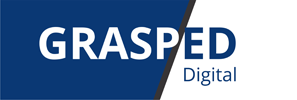The foundation of a successful personalized marketing strategy is knowing your customers!
This is done by using customer segmentation to divide your customers into groups based on interests, actions, and eventually, historical data.
Then, when you create your personalized marketing campaign, this could mean that two customers in a segment both receive an email about an upcoming sale, but the items featured in the email vary based on their individual purchase history.
How do you create customer segments?
The first step to creating customer segments is gathering information about your existing customers.
There are several ways to approach this, depending on the size of your business and your available resources.
Whichever method you choose, you should be aiming to collect demographic (or firmographic) and behavioral data.
If you have an existing ecommerce shop, your existing martech stack (marketing technology stack) will probably offer useful data regarding your customers and leads.
You can integrate your existing stack using a customer data platform, which aggregates data across your touchpoints to build detailed profiles of individual customers.
If you’re not already involved in ecommerce, you can use your customer relationship management software as a starting point, but you’ll likely want to supplement that with analytics from other sources.
Audit your martech stack to see what you have available before you spend on gathering more data. Your ad-tech analytics and social media management tools are good places to start.
Once you’ve got this data, it needs to be analyzed to identify patterns and trends happening in your business.
This can be done manually, but we highly recommend adding a customer analysis and segmentation tool to your martech stack somewhere down the line to automate the process. }
Here’s a link to an article that further explains what a martech stack is in the event you need more information: https://www.actioniq.com/blog/what-is-a-martech-stack/
There are lots of possible segments, here are a few to get you started:
Demographics
- Age group
- Gender identity
- Sex
- Occupation
- Location
- Life stage
Purchasing Behavior
- Spending amount
- Product interest
- Repeat customers
- Usage level
- Stage of the customer journey
- Customer experience
Personality Types
- Risk-averse
- Price-conscious
- Non-urgent shoppers
- Needs social proof
- FOMO type buyer
- Scarcity works well
Even though segmentation is time-consuming, it will set your business up for success in the long run.
Because when you know how your customers think, you’re better positioned to deliver meaningful value that shows your customers you care about their needs and the experience they have with your business.

